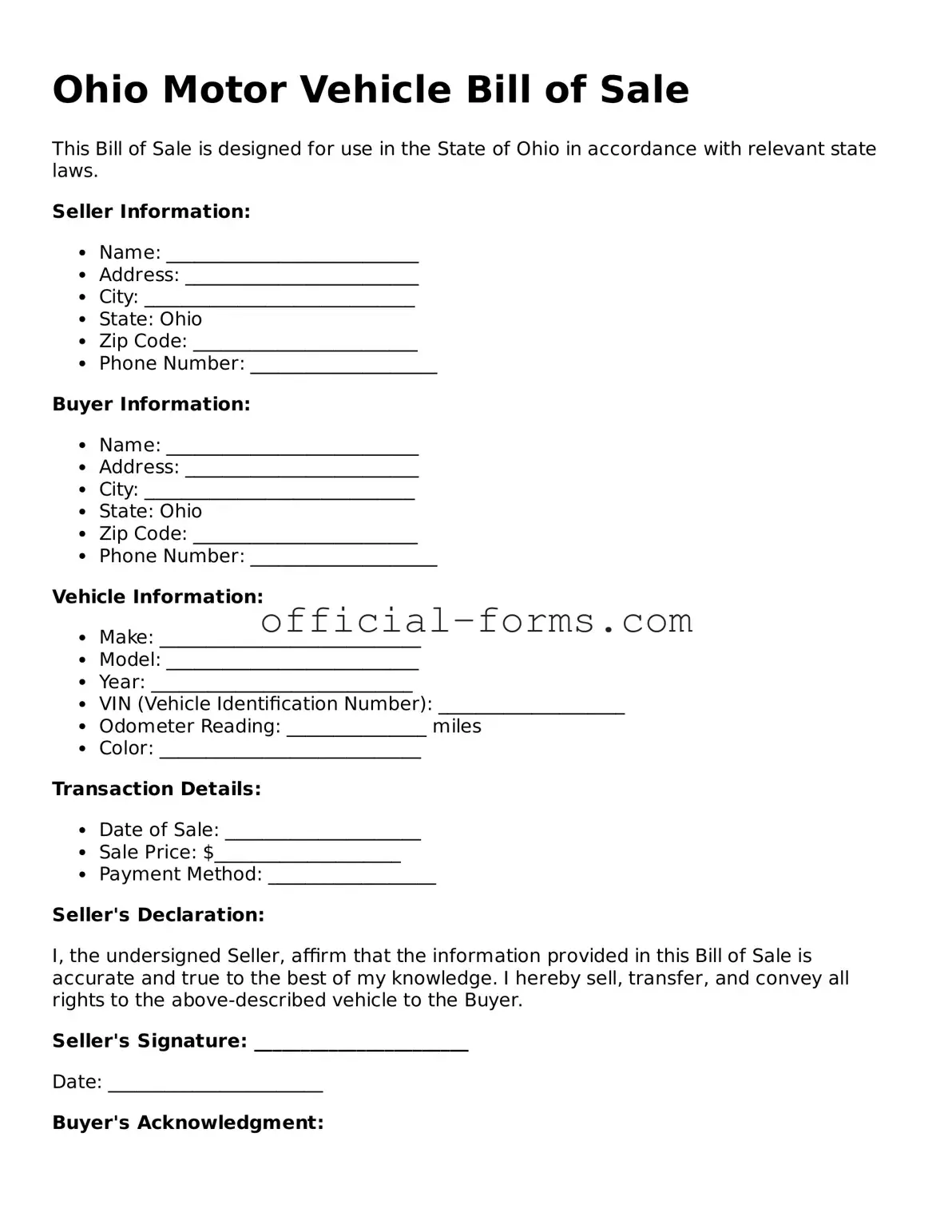When filling out the Ohio Motor Vehicle Bill of Sale form, many people overlook important details that can lead to issues later on. One common mistake is not providing accurate vehicle information. This includes the vehicle identification number (VIN), make, model, and year. Missing or incorrect details can cause confusion and may complicate the registration process.
Another frequent error is failing to include the correct purchase price. The amount listed should reflect the actual transaction. If the price is too low, it may raise red flags with the state, while a higher amount could lead to unnecessary taxes. Always double-check this figure to ensure it matches the agreed-upon price.
People often neglect to sign the form. Both the seller and the buyer must provide their signatures for the document to be valid. Without these signatures, the sale may not be recognized by the state. It's essential to ensure that both parties sign before submitting the form.
In addition to signatures, individuals sometimes forget to date the form. The date of the sale is crucial for record-keeping and legal purposes. If the date is missing, it can lead to complications in proving when the transaction occurred.
Another mistake involves not providing contact information. Including phone numbers and addresses for both the buyer and seller is important. This information can be helpful if there are any follow-up questions or issues regarding the sale.
Some people also fail to keep a copy of the completed Bill of Sale. Having a copy serves as proof of the transaction. It can be beneficial if there are disputes or if the buyer needs to register the vehicle later.
Additionally, individuals sometimes overlook the importance of checking for liens. Before completing the sale, ensure that the vehicle is free of any liens or outstanding loans. If there are liens, the buyer may face problems in the future when trying to register the vehicle.
Lastly, many forget to review the entire form before submission. Taking a moment to read through the completed form can help catch any mistakes. This simple step can save time and prevent potential issues down the line.
